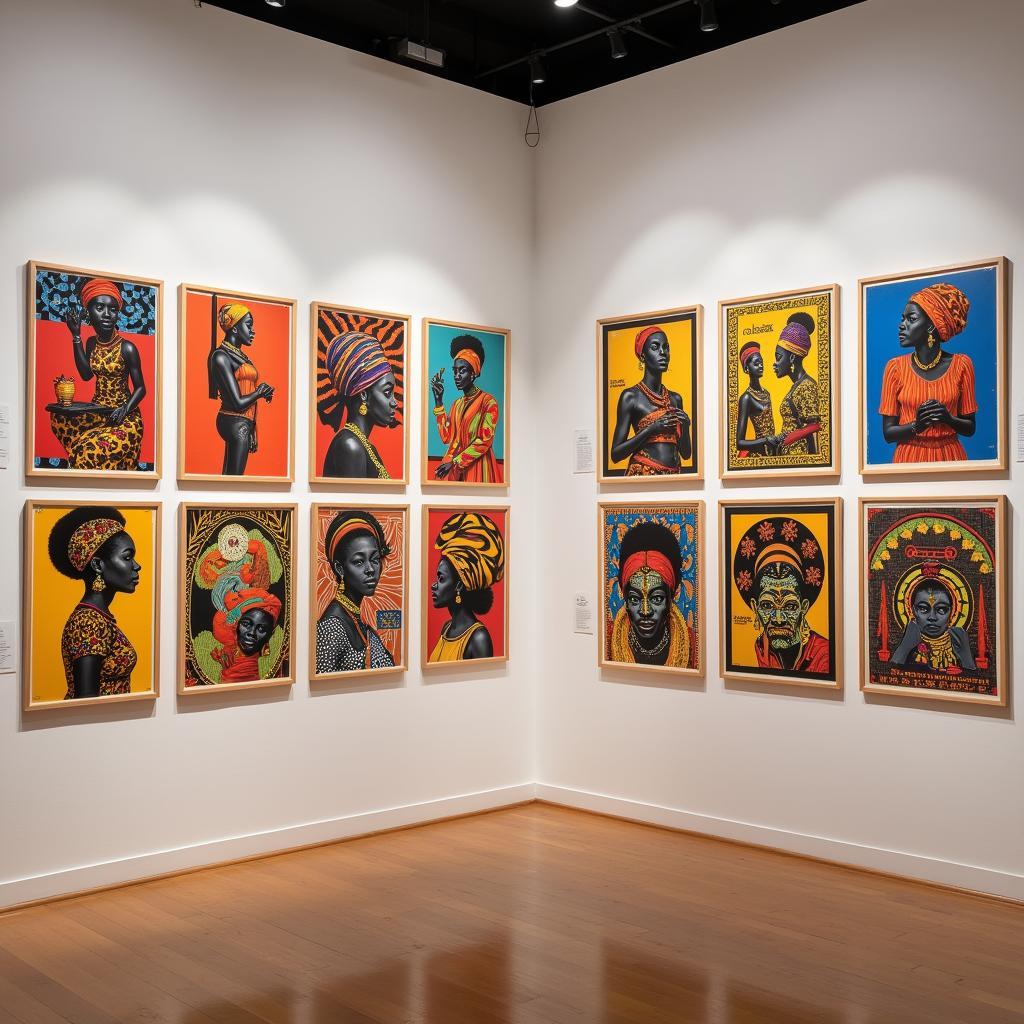A Journey Through African Jewelry History
African Jewelry History is a rich tapestry woven with cultural significance, artistic innovation, and spiritual meaning. From ancient Egyptian adornments to contemporary designs, African jewelry reflects the diverse traditions and artistry of the continent’s many peoples. For centuries, jewelry has been more than mere decoration; it has served as a powerful symbol of status, identity, and spiritual beliefs.
The Significance of Materials in African Jewelry History
Throughout African jewelry history, materials have played a crucial role, often holding symbolic meaning. Gold, representing wealth and power, was prized by many cultures, including the Ashanti of Ghana, who crafted elaborate gold jewelry for royalty. african gold jewelry is well known for its intricate designs and cultural significance. Similarly, ivory, though now ethically controversial, was once a symbol of status and prestige. Other materials, such as beads, shells, and feathers, were readily available and used to create beautiful and meaningful adornments. Different regions favored different materials based on availability and tradition. For instance, the Maasai of East Africa are renowned for their intricate beadwork, employing vibrant colors to signify age, marital status, and social standing.
Exploring the Regional Variations in African Jewelry
The vastness of Africa has fostered a rich diversity of jewelry traditions, each with its unique style and significance. North African jewelry, influenced by Islamic and Berber cultures, often features intricate silverwork and the use of amber and coral. In West Africa, gold and bronze casting techniques have been passed down through generations, resulting in stunning pieces like the iconic lost-wax cast pendants. african gold neck choker remains a popular choice for those seeking to connect with their African heritage. Southern Africa, rich in natural resources, is known for its use of beads, shells, and animal materials.
How has African Jewelry Evolved Over Time?
African jewelry history is not static; it’s a constantly evolving narrative. While traditional techniques and motifs continue to be valued, contemporary African jewelers are also embracing modern materials and designs, blending the old with the new.  Modern African Jewelry Showcasing Innovative Designs This fusion of tradition and innovation has led to a vibrant and exciting contemporary jewelry scene, showcasing the creativity and dynamism of African artists.
Modern African Jewelry Showcasing Innovative Designs This fusion of tradition and innovation has led to a vibrant and exciting contemporary jewelry scene, showcasing the creativity and dynamism of African artists.
What are the Common Motifs Found in African Jewelry?
Certain motifs recur throughout African jewelry history, reflecting shared beliefs and cultural values. Animal imagery, symbolizing strength, power, and connection to nature, is prevalent. african animal art frequently features animals. Geometric patterns, often imbued with spiritual significance, are also common, reflecting the order and balance found in nature. These motifs, passed down through generations, continue to resonate with contemporary jewelers and wearers alike.
“African jewelry is more than adornment,” says Dr. Anika Kwame, a renowned anthropologist specializing in African art and culture. “It’s a visual language, a narrative of identity, and a tangible link to the past.”
The Role of Jewelry in African Society
African jewelry has always played a crucial role in social and cultural contexts. It signifies social status, marks life transitions, and serves as a form of personal expression. african jewellery biclor offers a unique blend of tradition and modernity. Wedding jewelry, for instance, often holds deep symbolic meaning, representing the union of two families. Jewelry can also be used as a form of protection, with amulets and talismans believed to ward off evil spirits. “Jewelry is an integral part of African identity,” adds Kwame. “It tells a story, not just of the individual, but of their community and their heritage.”
Conclusion
African jewelry history is a testament to the creativity, ingenuity, and cultural richness of the continent. From ancient traditions to contemporary designs, African jewelry continues to captivate and inspire. Understanding its history allows us to appreciate the profound significance of these adornments, not merely as objects of beauty, but as powerful symbols of cultural identity and human expression. Explore the fascinating world of African jewelry and discover the stories it tells.
FAQ:
- What are some common materials used in traditional African jewelry?
- What is the significance of beads in Maasai jewelry?
- How is modern African jewelry different from traditional styles?
- Where can I learn more about the history of African jewelry?
- Are there ethical considerations when purchasing African jewelry?
- What are some examples of symbolic motifs found in African jewelry?
- How can I identify authentic African jewelry?
Situations with Common Questions:
-
Scenario: A tourist visiting a local market in Tanzania is interested in purchasing a Maasai beaded necklace but wants to understand the meaning behind the colors.
-
Question: What do the different colors of beads signify in Maasai jewelry?
-
Scenario: A student is researching the history of gold jewelry in West Africa for a school project.
-
Question: What are some prominent examples of traditional gold jewelry from West Africa?
Further Reading:
Need Help?
Contact us 24/7: Phone: +255768904061, Email: kaka.mag@gmail.com, or visit us at Mbarali DC Mawindi, Kangaga, Tanzania.

